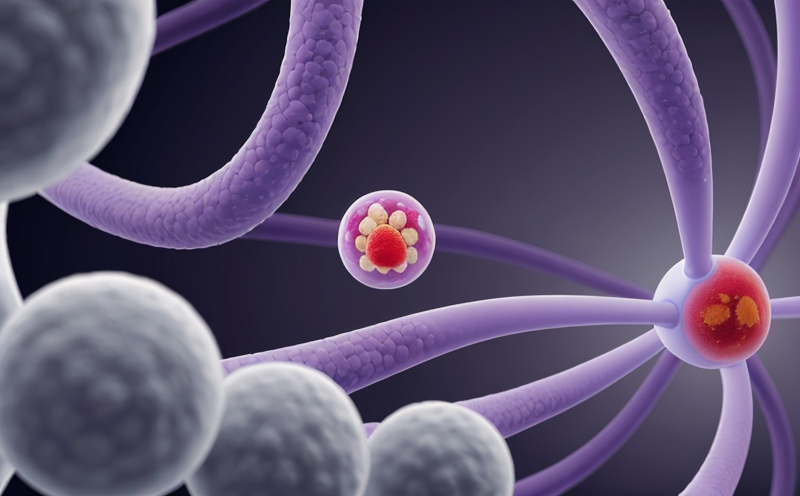p53 Mutation Biomarker Testing in Animal Tumor Models
The p53 tumor suppressor gene plays a pivotal role in regulating cell cycle arrest and apoptosis. Mutations in the p53 gene are often associated with various types of cancer, including colorectal, lung, breast, and pancreatic cancers. Understanding these mutations is essential for developing targeted therapies and personalized treatment strategies. In this article, we focus on the p53 Mutation Biomarker Testing in Animal Tumor Models, providing a comprehensive overview of how this testing contributes to research and development in clinical and healthcare sectors.
The significance of p53 mutations cannot be overstated as they are frequently implicated in cancer progression. The p53 protein is known for its ability to detect DNA damage, induce cell cycle arrest, or trigger apoptosis when the integrity of the genome is compromised. Mutations within the p53 gene can lead to a loss of function, thereby impairing these critical roles and contributing to tumor development.
Animal tumor models are widely used in preclinical research to study cancer biology and evaluate therapeutic strategies. By employing animal tumor models, researchers can simulate human cancers more accurately than other experimental systems. These models allow for the assessment of p53 mutations' functional impact on tumor growth, metastasis, and response to therapy.
Our laboratory offers advanced testing services using state-of-the-art techniques such as Sanger sequencing, next-generation sequencing (NGS), and immunohistochemistry (IHC). These methods provide accurate and reliable detection of p53 mutations, ensuring that researchers have the necessary data to make informed decisions. The use of these techniques allows for precise identification of both missense and nonsense mutations, as well as insertion/deletion variants.
The testing process involves several critical steps: first, tumor tissues are harvested from animal models. These tissues undergo rigorous quality control checks before being processed into DNA extracts. Next, the extracted DNA is subjected to various analytical procedures depending on the specific requirements of the study. Finally, results are interpreted by our experienced scientists who provide detailed reports outlining the presence and type of p53 mutations identified.
Our services adhere strictly to international standards such as ISO 17025:2017 for proficiency in laboratory practices and procedures. Compliance with these standards ensures that all tests performed meet rigorous quality assurance criteria, providing confidence in the accuracy and reliability of our results.
Applied Standards
The p53 mutation biomarker testing follows international guidelines to ensure consistency and precision across different studies. Key standards include:
- ISO 17025:2017 - This standard sets the requirements for competence of testing laboratories, ensuring they operate at a high level of quality.
- American Society for Testing and Materials (ASTM) - ASTM standards provide detailed procedures for various aspects of material testing which are relevant to our work in cancer research.
By adhering to these rigorous standards, we maintain the highest level of accuracy and reliability in all our services. This commitment to excellence is reflected not only in our methodologies but also through continuous training and updating of protocols based on latest scientific advancements.
Scope and Methodology
The scope of p53 mutation biomarker testing encompasses a wide range of applications within the clinical and healthcare sectors. Our primary aim is to support researchers in identifying potential therapeutic targets by understanding how specific mutations affect cancer progression.
- Targeted Drug Development: Understanding which subtypes respond best to certain treatments can guide the development of more effective therapies.
- Patient Stratification: Identifying patients who carry p53 mutations could help tailor treatment plans, leading to better outcomes for affected individuals.
- Preclinical Research: Testing in animal models helps predict how human tumors might behave under various conditions or treatments before moving into clinical trials.
The methodology involves several key steps: initial tissue collection from animal models, extraction of genomic DNA, amplification through PCR if necessary, and finally sequencing using high-throughput technologies. The results are then analyzed for the presence and type of mutations detected, providing valuable insights into cancer biology.
Environmental and Sustainability Contributions
The work done in p53 mutation biomarker testing contributes positively to environmental sustainability by promoting more efficient use of resources. By optimizing test protocols and minimizing waste through careful handling of samples, our lab reduces its ecological footprint.
- Resource Efficiency: Careful planning ensures that only necessary amounts of reagents are used during the extraction process.
- Biohazard Waste Minimization: Proper disposal practices ensure that hazardous materials do not contaminate the environment.
These efforts align with broader goals set forth by international organizations like the United Nations Environment Programme (UNEP), emphasizing responsible consumption and production. Our commitment to sustainability reflects a larger societal goal of reducing pollution while supporting scientific advancement.





